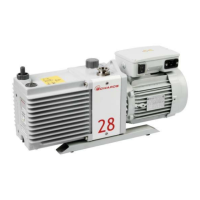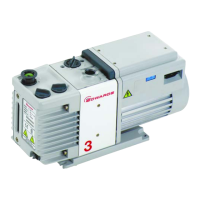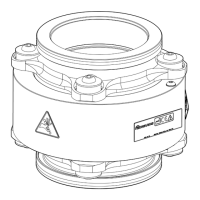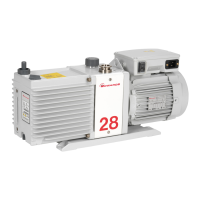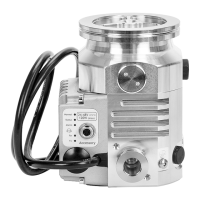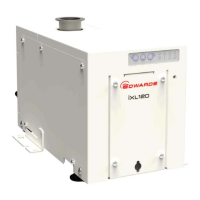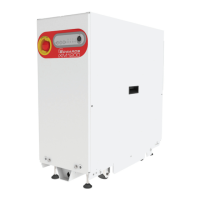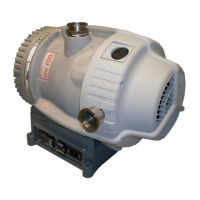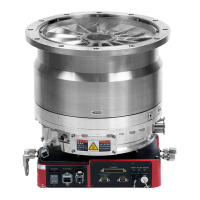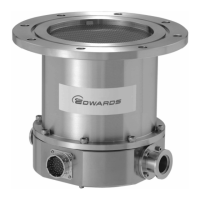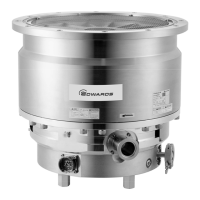© Edwards Limited 2008. All rights reserved. Page 27
Edwards and the Edwards logo are trademarks of Edwards Limited.
Installation
S900-01-880 Issue C
3.5 Locate the booster pump
You must mount the booster pump on a smooth, flat, level surface. The degree of variation in level should not exceed
5.2 mm m-1 (0.063 inch ft-1) in any direction. Check that all four pump feet contact the mounting base. Do not distort
the booster pump body. You must securely fix the booster pump in position before you operate it.
Before you install the pump, check that there are no foreign materials or debris in the vacuum pipelines or in the
impeller cavities in the body of the pump. Check that the impellers rotate freely.
The booster pumps are designed for optimal performance in clean environments with ambient temperatures as
specified in Section 2.1. If you use the booster pumps in areas of higher temperatures, this will result in higher
discharge temperatures, and possible over-temperature cut-outs. If you use the booster pumps in dirty locations or
where oil vapour is present, this can result in overheating of the motor, belt slippage, or premature wear. When the
pump is used in a dirty environment, ensure that you inspect and clean the equipment as necessary.
Locate the pump as close as possible to the equipment/chamber which will be evacuated. Position the pump so that
electrical and vacuum pipeline connections can be easily made. Provide adequate access space around and above
the pump, so that the pump can be easily serviced. Avoid long lengths of vacuum pipeline from the equipment/
chamber being evacuated to the booster pump.
The booster pumps are precision balanced devices. You must mount the booster pump on a sufficiently rigid base,
and secure it to the floor to reduce potential system vibration. Vacuum pipelines attached to the booster pump can
vibrate excessively if they are not properly supported or secured. Booster pump vibration is usually the results of
insufficient support.
3.6 Connect the vacuum and exhaust pipelines
Install a removable inlet filter so that particles, debris or loose components cannot enter the pump during
commissioning.
All vacuum pipelines should be as short as possible and should be no smaller than the diameter of the booster pump
inlet. When you need to install a long length of pipeline, use pipe which has a diameter larger than the diameter of
the pump inlet. Conductance-check the pipelines to ensure that the pumping speed of the system will not be
decreased. Do not install restrictive pipelines or valves in the exhaust pipeline; these may cause the exhaust pressure
to exceed atmospheric pressure. If necessary, consult Edwards for advice and assistance when you need to size long
lengths of pipelines.
Use a clean rag dampened with Loctite Safety Solvent (or another cleaning solution compatible with the gases to be
pumped) to clean the booster pump impellers and flanges if they have accumulated dirt during installation or storage.
It is important that the flanges are clean; if they are not, you will not be able to obtain a good vacuum seal.
Install an isolation valve in the foreline to the booster pump, so that the pump can be isolated from the chamber/
vacuum system.
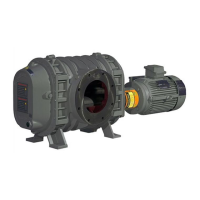
